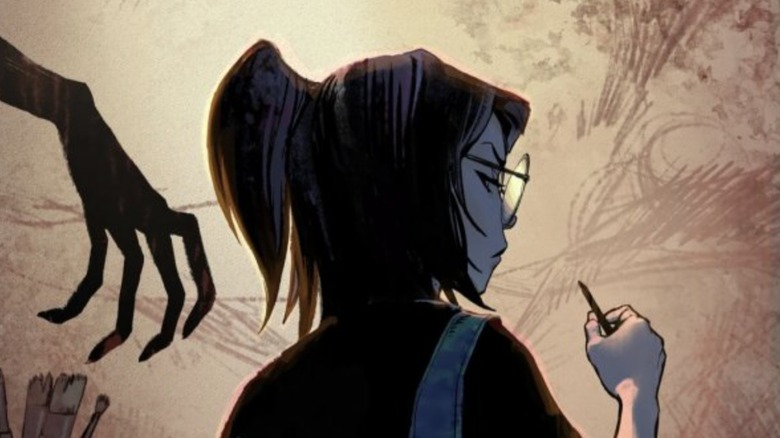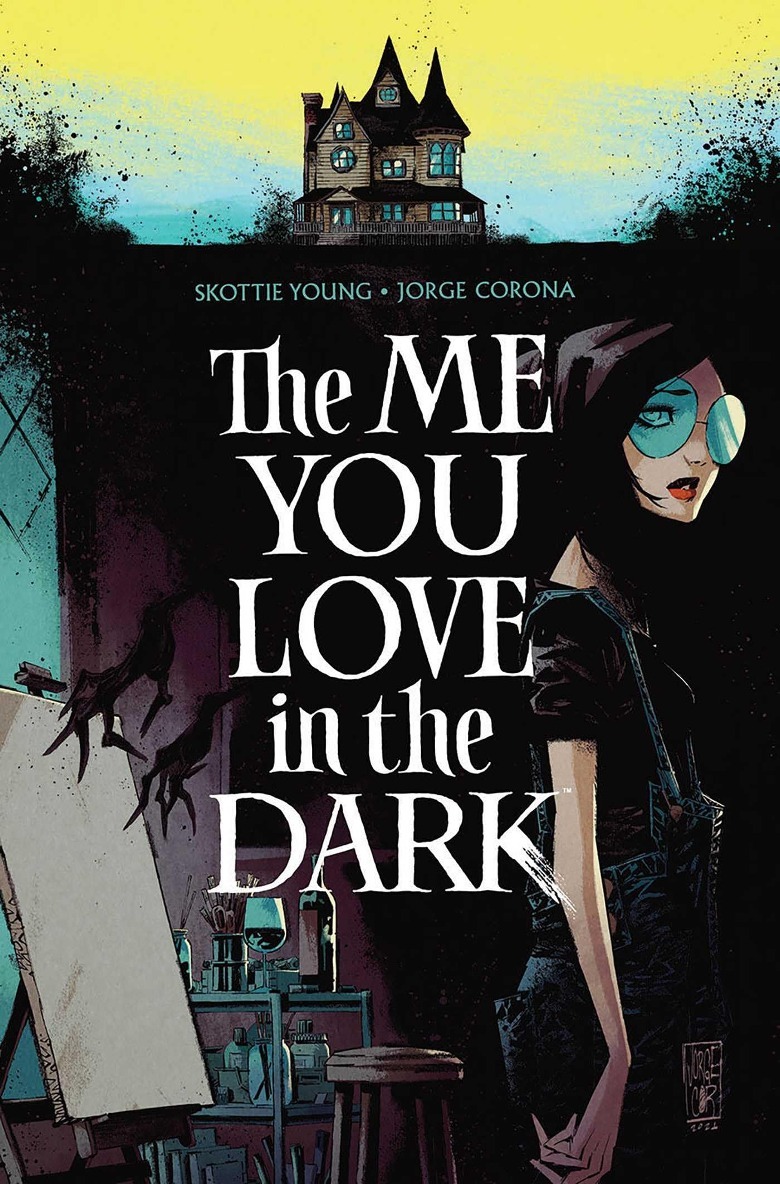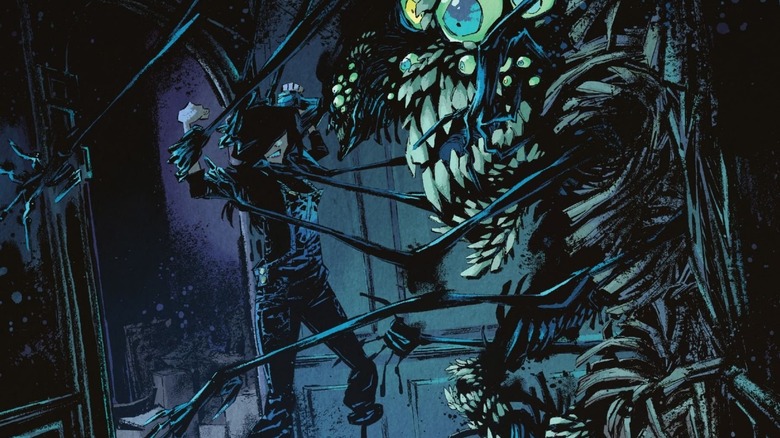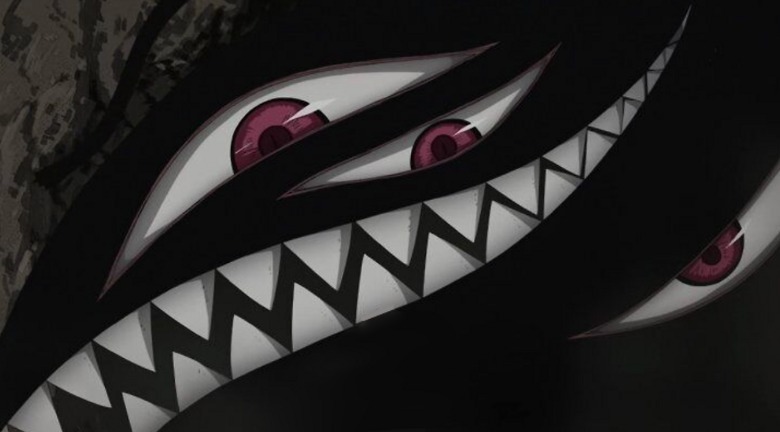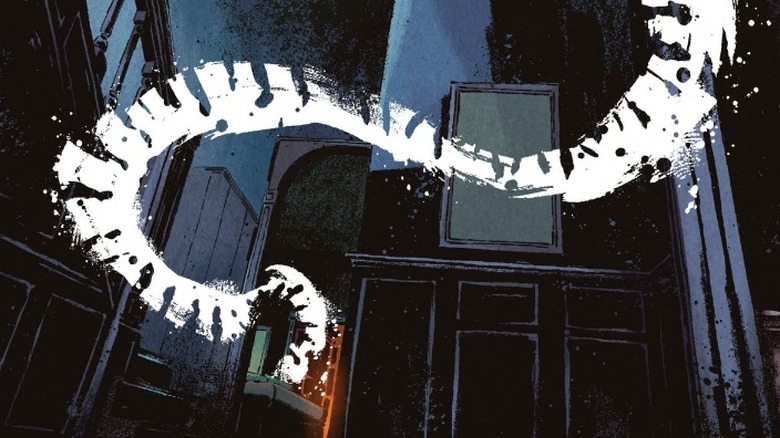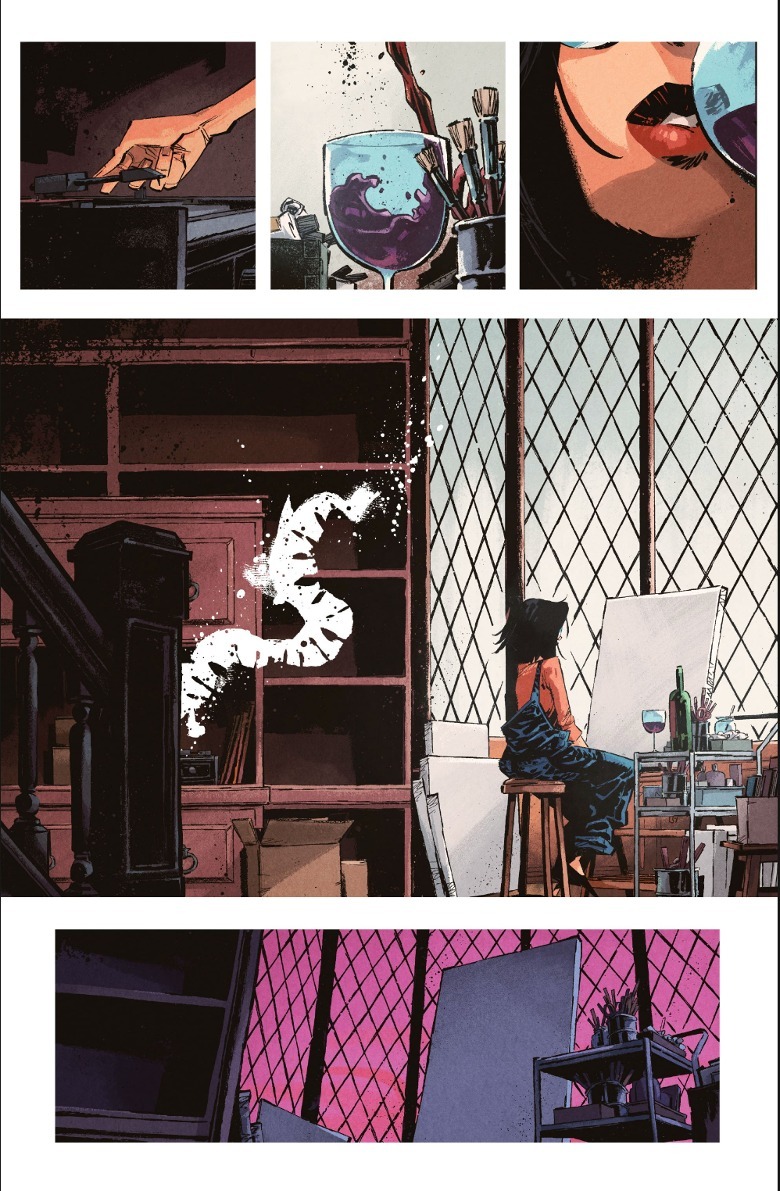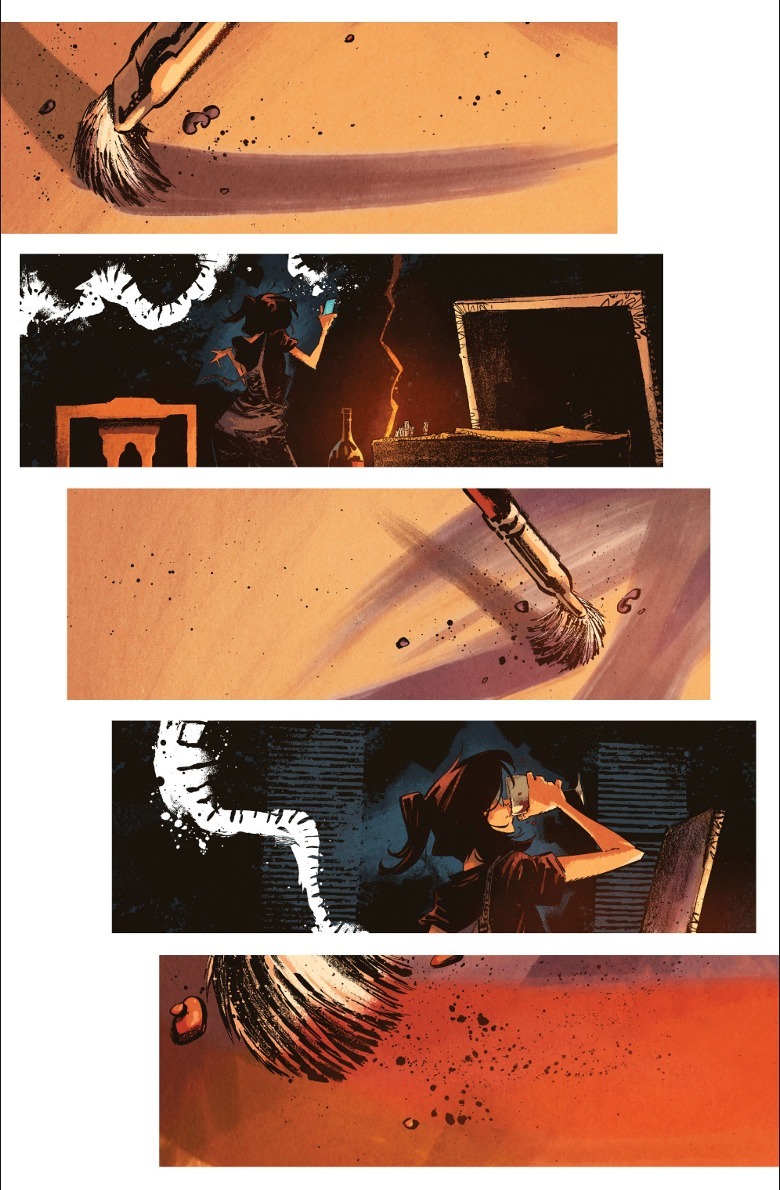This Terrifying Horror Comic Echoes One Of Stephen King's Greatest Haunted House Stories
One of the go-to scary stories is the haunted house tale; it's as easy to tell one sitting around a campfire as it is to make a horror picture out of one. One recent haunted house story that may have slipped under your radar — but shouldn't have — is the 2021 comic mini-series "The Me You Love In The Dark."
Artist Ro Meadows has a showcase deadline approaching. So, she rents an old house in the midwest, thinking she needs some isolation to create. Her real estate agent warns her that her chosen house is rumored to be haunted, but Ro feels too drawn in to pass it up. As she still struggles to paint, she learns the house wasn't empty even before she moved in.
"The Me You Love In The Dark" is the work of writer Skottie Young and artist Jorge Corona (who is currently killing it as artist on the best-selling "Transformers" comic). The comic is their second team-up, sandwiched between "Middlewest," and their new Western, "Ain't No Grave." All three comics suggest they are a new comic-making force to look out for.
Speaking to AIPT, Young and Corona mentioned they first plotted the story shortly before the COVID-19 pandemic began. They felt like they'd been dealt an unwinnable hand, having conceived a comic about someone trapped in a house when their readers had just gone through their own horror story like that. Instead, it made their comic even more resonant. It helps that "The Me You Love In The Dark" captures the most essential part of the cabin fever experience: it has a slow onset.
The confined setting and Corona's rhythmic paneling mean that "The Me You Love In The Dark" is a breezy read — the five issues flow easily as one. Each of the five covers follow a pattern; at the top of the page, the house is sitting on top of a black void. Beneath that, there's a scene featuring the characters. In issue #1's cover, it's Ro with her back turned into the darkness as two shadowed hands stretch out towards her easel.
This is a book you can judge by its cover. The comic mixes true horror with a cartoony art style (take Ro's impossibly huge, blue enough to be opaque glasses), but is no less scary despite how unrealistic it looks.
"The Me You Love In The Dark" invites comparisons to horror writer legend Stephen King. The collected edition's back cover blurb mentions King (and Neil Gaiman, for there's a lot of "Coraline" in this comic too) and someone in the book name-checks "The Shining." Like that book, this one is also about a creative who tries to use isolation to get ahead on work. (Though Jack Torrance was a writer while Ro is a painter.) Their work-vacation goes awry when they meet something in the house that holds possessive ill-intent.
Despite the warranted "Shining" comparisons, the dynamic between Ro and the house ultimately becomes closer to another (almost as good) Stephen King book: "Misery," which is about an author held hostage by a deluded fan.
The Me You Love In The Dark uses the horror genre to explore abusive relationships
"The Me You Love In The Dark." That's a title that crawls into your head and never leaves. It's a mouthful, but not an unpleasant one. Each word in the sentence becomes more intriguing and ominous than the last. It also tells the reader before they even crack open the book that the story will be a bumpier ride than a typical "ghost tries to scare someone out of a house."
No, this ghost wants Ro to stay in the house — and at first, she's happy to agree. When the ghost introduces himself halfway through issue #1, he's polite and trying not to scare Ro. The ghost becomes her muse, guiding her through her artist's block; his very presence makes her imagination run wild, and he helps her realize she paints better in the dark.
At the end of issue #3, to celebrate Ro completing her work, the ghost shows her through a gallery room he's been assembling for her. It's a moment ripped out of "Beauty and the Beast" (the Disney version or otherwise), with the Beast winning over Belle with a good heart to make up for his frightening appearance. Framed by a half-open door, Ro and the ghost embrace for a kiss. By now you're convinced that you're reading a love story.
Then issue #4 opens with Ro's agent calling her and saying that she needs to come back home for the gallery opening. Only the ghost won't let her leave, not even to pick up art supplies. The first time he loses his temper, he apologizes. He loves Ro so much, he has no choice but to be controlling — and he does love her, just like she loves him, right?
And now, the core of this story stops hiding in the shadows. "The Me You Love In The Dark" is a "romantic" horror story about an abusive relationship. The bad boyfriend may be the monstrous spirit of a house, but this idea is too clear to be even count as allegory. The ghost put up a kind face, but the closer he gets to Ro, the more his true self steps into the light, and she goes from loving him to being terrified of him. The earlier issues keep the ghost concealed in the shadows, only his limbs peaking out. His true form is gradually unveiled and by issue #5, he resembles a stretching black mass of green eyes and toothy mouths. (The closest comparison to his look is the homunculus Pride from "Fullmetal Alchemist," see below.)
To save herself, Ro burns the house down. The last we see of her, the fire has completely consumed the building and she's at peace.
The Me You Love In The Dark makes a horror comic beautiful
The comic makes no missteps in reaching this conclusion, but it does get there rather fast. Even as the hints of the ghost's true nature are there from the beginning, the flip to outright abuse at the beginning of #4 feels like a switch flipping. One wonders if the comic needed just one extra issue's worth of breathing room.
Then again, this breakneck pacing could be inevitable due to how Young and Corona tell their story page-to-page.
While Ro's struggles with drawing are a persistent challenge, the same can't be said of this book's artists. You feel the slowness conveyed in scenes when Ro spends days failing to paint, but the story itself isn't slow. Another artist team might describe the time Ro is wasting by repeating the same image of her sitting in front of a blank canvas. Corona is much more economical. Take this page:
One wide shot panel of Ro staring at her lack of progress, then cut to a window showing the sun has already set. We know hours have passed in the seconds it takes to absorb those images. Corona also makes Ro's painting scenes feel exciting and alive by concentrating on close-ups. If this comic were a movie, it'd be constantly cutting to new close-ups, and there'd be aggressive sound design to emphasize each action. On a screen, that can feel overbearing; on a comic page, though, it only draws you in.
When a brush hits the easel, we feel so close to it that we can hear the sound it's making. The thistles of the brush scratching the parchment, the crack of a match lighting up a candle, every drop of wine hitting a glass and pooling up, it all rings in your ears as if you're sitting next to Ro. Ro puts on a record player while she paints too. The music is represented as an invisible spiral (colored white with black highlights like piano keys) flowing through the air, so the reader never forgets about the sound.
While much of "The Me You Love In The Dark" does unfold in the darkness, the book has no dearth of color. Colorist Jean-Francois Bileau's warm oranges on thick blacks make the candlelit darkness look beautiful without shining panels up so much that the scary mystery of shadows is lost.
Your time with this comic will be brief, but the scene-building (visual and narratively) of "The Me You Love In The Dark" so excels that you'll never want to leave this haunted house.
"The Me You Love In the Dark" is available for purchase in print and digital.
